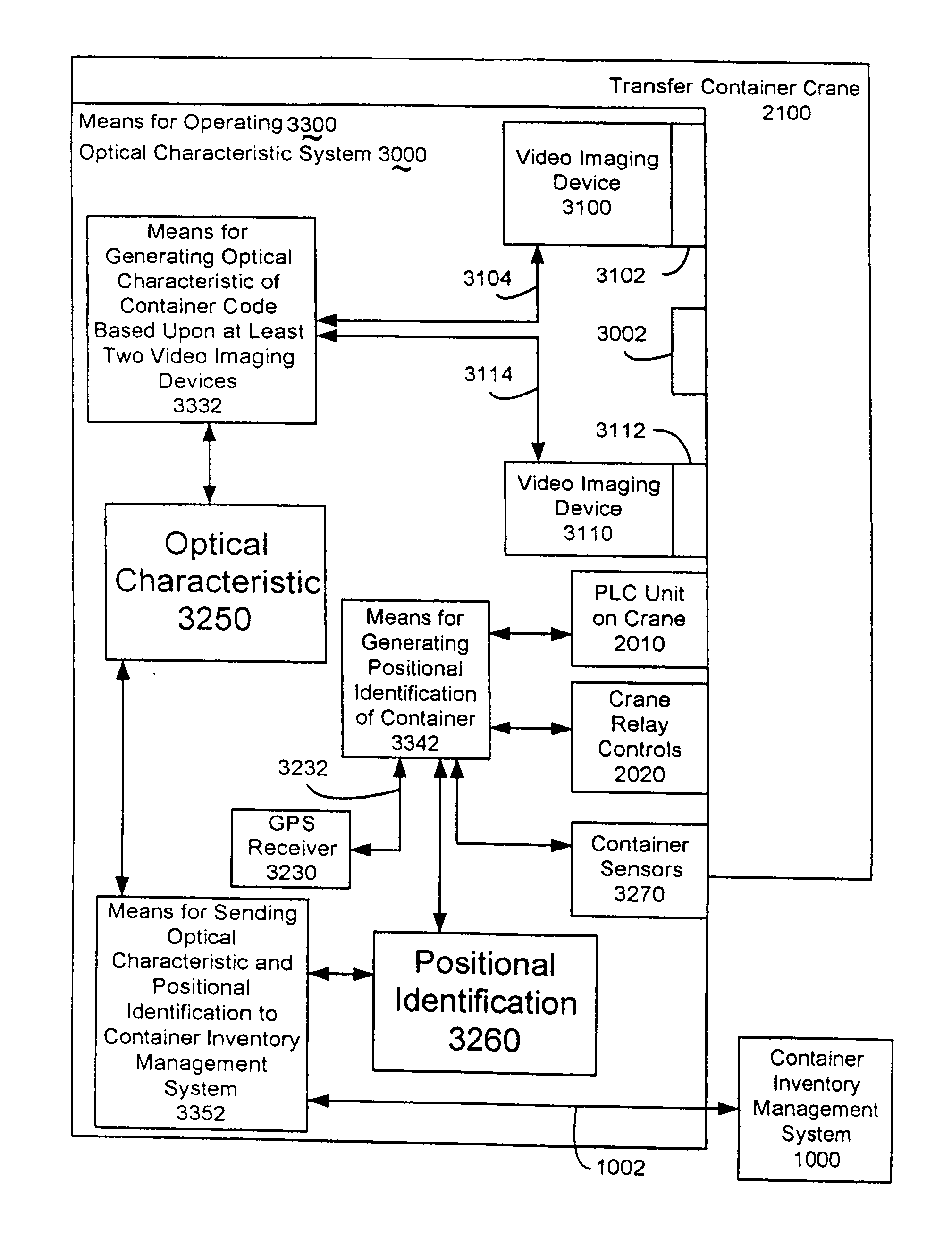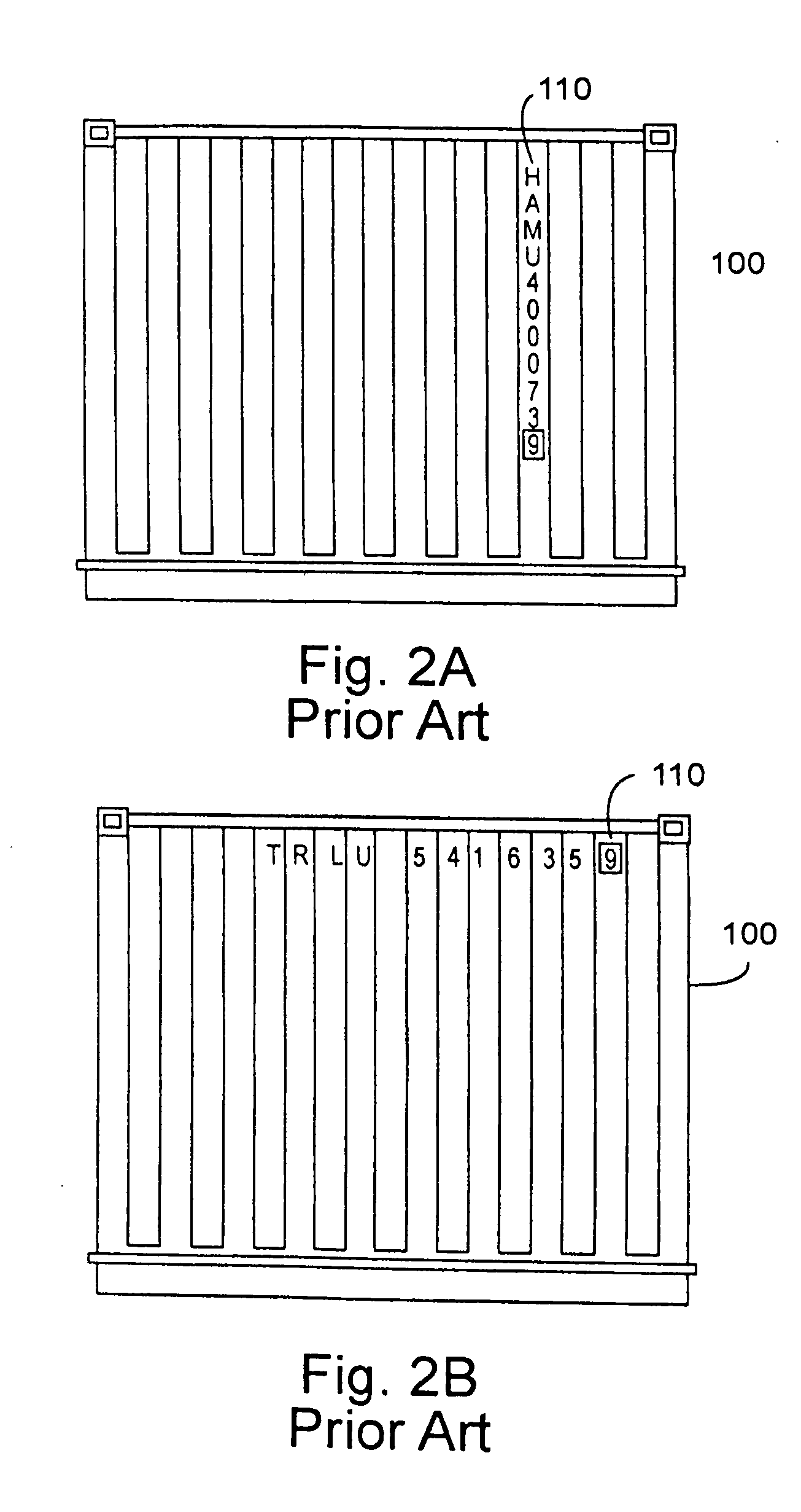Method and apparatus of automated optical container code recognition with positional identification for a transfer container crane
a technology of automatic identification and transfer container crane, which is applied in the direction of program control, instruments, testing/monitoring control systems, etc., can solve the problems of reducing the overall productivity of the berthing process, affecting the overall berthing process, and the magnetic tag method suffers from several problems, so as to reduce the error rate of container inventory and increase the overall terminal efficiency
- Summary
- Abstract
- Description
- Claims
- Application Information
AI Technical Summary
Benefits of technology
Problems solved by technology
Method used
Image
Examples
Embodiment Construction
[0063] The invention provides a method and system supporting container code recognition of a container, from a transfer container crane 2100 as shown in FIG. 1, to manage at least a container inventory. The invention automatically and efficiently tracks the location of the container in a container storage area, automatically updating at least the container inventory database.
The invention allows a container code reader to find any container in a storage area including containers carrying specialized tag identifiers. The invention supports remotely interrogating a container for identification.
[0064]FIG. 3 illustrates a marine shipping yard 20 in accord with the invention. System 1000 uses container code recognition of a container 100, identified by a container code 110 as shown in FIGS. 2A and 2B, from transfer container crane 2100 shown in FIG. 1 to manage at least a container inventory. The invention automatically and efficiently tracks the location of the container in a contain...
PUM
 Login to View More
Login to View More Abstract
Description
Claims
Application Information
 Login to View More
Login to View More - R&D
- Intellectual Property
- Life Sciences
- Materials
- Tech Scout
- Unparalleled Data Quality
- Higher Quality Content
- 60% Fewer Hallucinations
Browse by: Latest US Patents, China's latest patents, Technical Efficacy Thesaurus, Application Domain, Technology Topic, Popular Technical Reports.
© 2025 PatSnap. All rights reserved.Legal|Privacy policy|Modern Slavery Act Transparency Statement|Sitemap|About US| Contact US: help@patsnap.com



